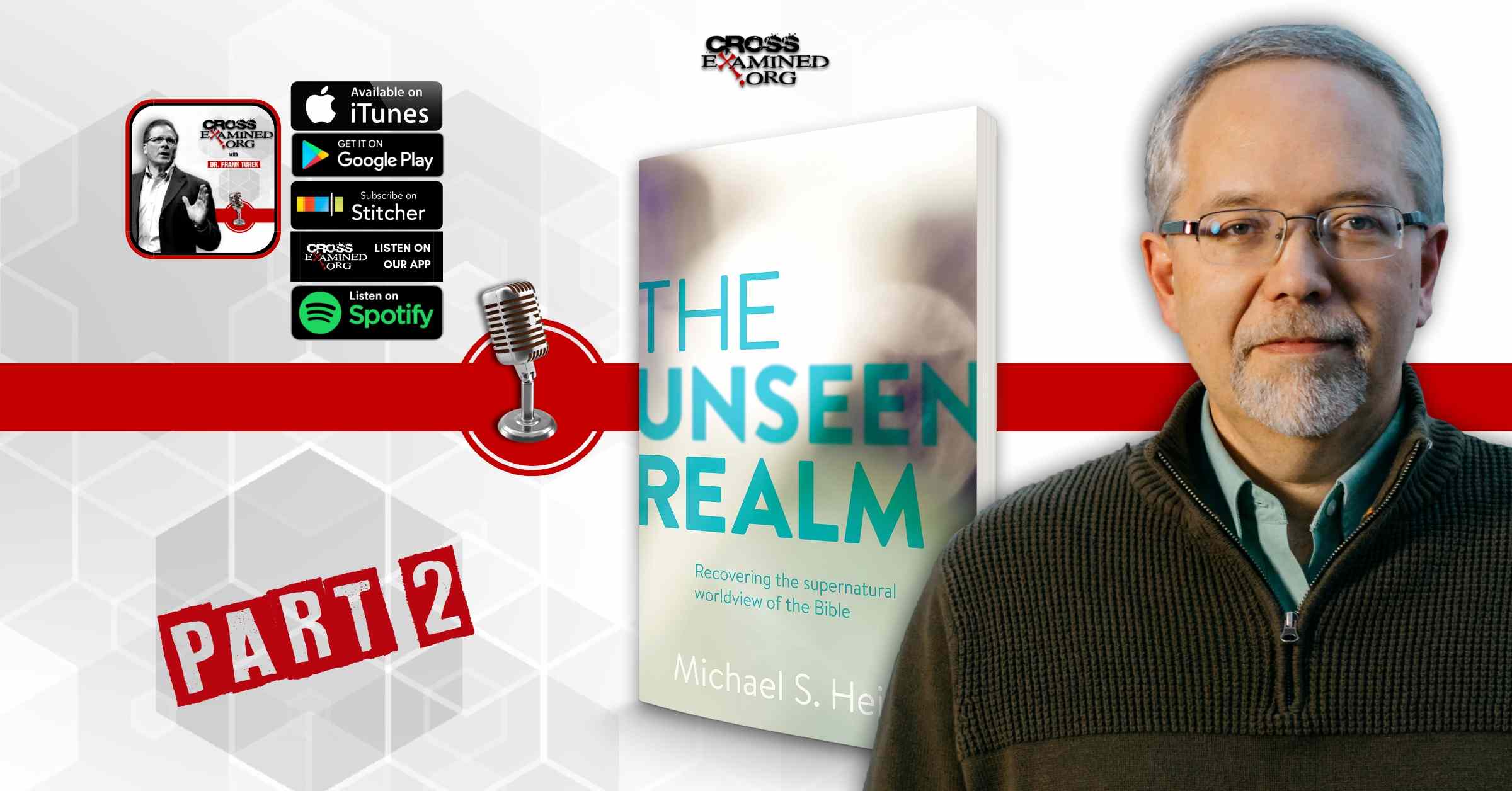Resurrection Defense Series: Transformation of Eyewitnesses
One of the most fascinating historical aspects of Jesus’s resurrection is the transformation it brought to individuals who claimed to have experienced the risen Jesus. Interestingly, these experiences occurred so early that Richard Bauckham contends that the “earliest Christology was already in nuce the highest Christology. All that remained was to work through consistently what it could mean for Jesus to belong integrally to the unique identity of the one God.”[1] Of the minimal facts accepted, Gary Habermas notes that the four “core” facts accepted about Jesus consist of Jesus’s death by crucifixion, the experiences the disciples had which led them to believe that Jesus had risen from the dead, the transformation of the disciples, and the conversion of Paul.[2] Thus, the transformation of the disciples occurred early in the history of the church and, thereby, holds tremendous value for the historical researcher. These experiences profoundly impacted the disciples’ theology—accepting that Jesus was now exalted to a “position of heavenly glory”[3]—and even emboldened them to the point that they were willing to die for what they knew to be true. The resurrection appearances of Jesus profoundly affected four men which will be the focus of this article.
Transformation of the Troubled Peter
While Peter was excited to see the risen Jesus to the point that he willingly jumped out of a boat and swam to shore just to see Jesus (John 21:7), he was dealing with his own inner turmoil. In the courtyard during Jesus’s trial, Peter had denied that he had known Jesus three times to a woman who served as the high priest’s maid (John 18:25-27). Jesus had already prognosticated Peter’s denial beforehand which led Peter to a time of great despair and agony (Luke 22:61). Peter must have thought that Jesus would never use him again for ministry. Why would Jesus ever trust him again? However, multiple pieces of evidence suggest that Jesus appeared to Peter privately (Mark 16:7; Luke 24:12; and 1 Cor. 15:5). Yet the story of Peter’s ministerial transformation comes from an encounter he had with the risen Jesus on the shores of the Sea of Galilee. While eating breakfast by a fire on the seashore, Jesus asked Peter three times if he loved him (John 21:15-19). Peter acknowledged that he did. The risen Jesus reinstated Peter back into the ministry. After his encounter with Jesus on the coast—the third time that Jesus had met exclusively with the disciples after his resurrection—Peter never again denied that he knew Jesus. Rather, he boldly proclaimed Jesus up until the time that he died for Christ. Church tradition holds that he was crucified upside down at Rome in c. AD 64 because he did not feel worthy to die in the same manner as Jesus. This was documented by historian Eusebius of Caesarea[4] and Origen of Alexandria.
Transformation of the Skeptical Thomas
Thomas had followed Jesus from the very beginning of Jesus’s ministry. Oddly, he was not found with the disciples when Jesus first appeared to them (John 20:24-25). Where was Thomas when Jesus first appeared to the disciples? Had he given up on the ministry? Did he seek to reopen his old business, whatever that may have been? No one could not blame Thomas as he had just witnessed his leader crucified to a tree. His investment in Jesus died when Jesus’s corpse was placed in a tomb—or so he thought. Regardless of his activities, he doubted the validity of the disciples’ claim that Jesus had risen from the dead. Again, no one could blame Thomas for his skepticism. While different Jewish sects held divergent opinions concerning the Messiah, none of them anticipated that the Messiah would rise from the dead before the end of time. Additionally, dead people do not normally rise from the dead. Thomas was justified in his disbelief. However, everything changed when Thomas encountered the risen Jesus. Jesus challenged Thomas to place his fingers in the nail prints of his hands and to thrust his hand into Jesus’s side (John 20:27-29). Then, Jesus challenged Thomas by saying, “Because you have seen me, you have believed. Blessed are those who have not seen and yet believe” (John 20:29).
Thomas did not remain “doubting Thomas.” Rather, he became “believing Thomas.” According to tradition and the apocryphal Acts of Thomas, the church cast lots to see which part of the world each disciple would serve. Thomas’s lot would lead him to India. The disciple would encounter the kings of the region and would not have the best relationship with them. The wife of King Misdaeus converted to Christianity to the king’s disdain. The king’s wife disobeyed him and instead followed apostolic Christianity which enraged the king. Eventually, the king ordered Thomas’s execution in Madras, India. While not all the information about Thomas’s ministry in India can be verified, it does appear that there are good reasons to believe that Thomas died in some manner for his faith while in India.[5]
Transformation of the Envious James
“Envious James” is used for this section, but it is merely one possibility to describe why James did not believe in Jesus during his earthly ministry. The Gospels note that the brothers and sisters of Jesus did not initially believe in him (John 7:5). However, James later had a change of heart to the point that he served as the pastor of the Jerusalem Church. What happened? The 1 Corinthians 15 creed lists James as one of those who witnessed the risen Jesus. James’s life was radically transformed because of the resurrection. The Jewish historian Josephus records the later martyrdom of James the brother of Jesus. He writes,
“Festus was now dead, and Albinus was but upon the road; so he assembled the Sanhedrin of judges, and brought before them the brother of Jesus, who was called Christ, whose name was James, and some others … and when he had formed an accusation against them as breakers of the law, he delivered them to be stoned.”[6]
Like Peter and Thomas, the resurrection transformed James to the point that he was willing to give his life for the Jesus that he previously spurned. The resurrection changed James’s negative connotations about Jesus into worship. Quite an extraordinary thing, don’t you think?
Transformation of the Adversary Paul
Paul’s transformation is the most popular of the four. Paul, otherwise known as Saul, was a persecutor of the church. He was a Pharisee of Pharisees, a disciple of the famed Gamaliel (Acts 22:3), and on track to become a member of the Sanhedrin. Yet Paul was dramatically changed on a road trip to Damascus. Paul had hoped to imprison or even murder the disciples of Jesus (Acts 9:1). He had written permission by the Jewish authorities to imprison any disciple of Jesus in Damascus and bring them back to Jerusalem for trial (Acts 9:2). As Paul made his march to Damascus, the risen Jesus appeared to Paul in a dazzling array of power. The risen Jesus inquired, “Saul, Saul, why are you persecuting me?” (Acts 9:4). Jesus identified himself and instructed Paul to go into the city. From that moment, Paul became a disciple of Christ. The disciples were not overly keen on the idea of accepting Paul into their fold. They thought that Paul was staging a sabotage. But as the risen Jesus told Ananias, “This man is my chosen instrument to take my name to the Gentiles, kings, and Israelites” (Acts 9:15).
Paul would suffer for the cause of Christ as he endured many hardships throughout his lifetime. Nonetheless, he endured until the very end. Tradition holds that Paul was beheaded in Rome around the same time that Peter died by crucifixion. This is verified by Tertullian, implying that Paul was considered a martyr by the end of the second century at least in northern Africa.[7] In his seminal work, McDowell lists Paul’s death as “the highest possible probability”[8] and that the beheading of Paul is “more probable than not.”[9]
Conclusion
From the four individuals listed, it is evident that the resurrection of Jesus brought about a major transformation in the lives of those who encountered the risen Jesus. Furthermore, the loving compassion of Jesus is shown by the way he forgave Peter of his past indiscretions, his willingness to provide evidence to the skeptic, his willingness to bring in even those of his family who had hurt him in the past, and the powerful means by which he accepted even the repentance of his former enemies. The risen Jesus continues to transform lives even today. Only eternity will tell how many souls have been transformed by this mysterious, powerful, and loving Savior who continues to seek and save the lost.
Notes
[1] Richard Bauckham, Jesus and the God of Israel: God Crucified and Other Studies on the New Testament’s Christology of Divine Identity (Grand Rapids, MI: Eerdmans, 2009), 235.
[2] Gary R. Habermas, The Historical Jesus: Ancient Evidence for the Life of Christ (Joplin, MO: College Press, 1996), 162.
[3] Larry W. Hurtado, One God, One Lord: Early Christian Devotion and Ancient Jewish Monotheism, 3rd ed (London, UK: Bloomsbury, 2015), 93.
[4] Eusebius of Caesarea, Ecclesiastical History 5.3.1.
[5] Despite the difficulties surrounding the Thomas martyrdom tradition, McDowell argues that the martyrdom of Thomas is “more probable than not.” Sean McDowell, Fate of the Apostles: Examining the Martyrdom Accounts of the Closest Followers of Jesus (London, UK: Routledge, 2008), 173.
[6] Josephus, Antiquities of the Jews 20.200-203.
[7] Tertullian, The Prescription Against Heretics 36.
[8] McDowell, The Fate of the Apostles, 113.
[9] Ibid., 114.
Recommended resources related to the topic:
Early Evidence for the Resurrection by Dr. Gary Habermas (DVD), (Mp3) and (Mp4)
Cold Case Resurrection Set by J. Warner Wallace (books)
Jesus, You and the Essentials of Christianity by Frank Turek (INSTRUCTOR Study Guide), (STUDENT Study Guide), and (DVD)
The Footsteps of the Apostle Paul (mp4 Download), (DVD) by Dr. Frank Turek
__________________________________________________________________________________________________________________________________________________
Brian G. Chilton is the founder of BellatorChristi.com, the host of The Bellator Christi Podcast, the author of the Layman’s Manual on Christian Apologetics, and a Ph.D. Candidate of the Theology and Apologetics program at Liberty University. He received his Master of Divinity in Theology from Liberty University (with high distinction); his Bachelor of Science in Religious Studies and Philosophy from Gardner-Webb University (with honors); and received certification in Christian Apologetics from Biola University. Brian is enrolled in the Ph.D. program in Theology and Apologetics at Liberty University and is a member of the Evangelical Theological Society and the Evangelical Philosophical Society. Brian has served in pastoral ministry for nearly 20 years. He currently serves as a clinical chaplain.
Original Blog Source: https://cutt.ly/mmfnj9C











